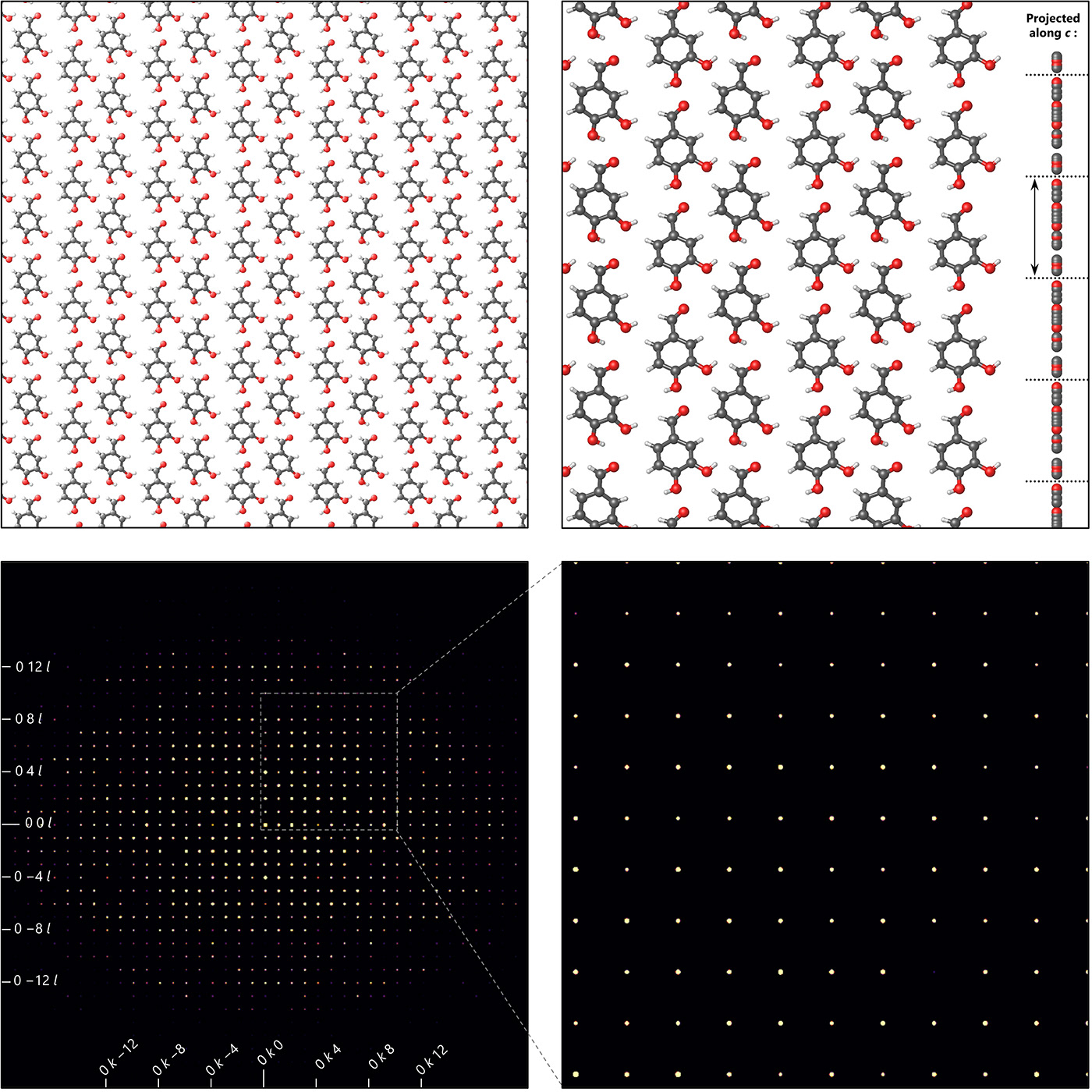Teaching set #5 - Systematic absences
The absence of intensity in reciprocal space positions described by specific sets of Miller indices is known as systematic absences (dictionary.iucr.org/Systematic_absences). This phenomenon results from the presence of symmetry elements having vectors with non-integer translational components in the structure of a crystal. At this point, classical crystallographic teaching dives into the mathematics that links these vectors to the annihilation of some Bragg peaks by destructive interference of diffracted waves.
In this teaching set, we take a different approach by looking at the structure-diffraction relationship in terms of spatial frequences, and by observing the effects of the presence of such symmetry elements, their partial violation, and their complete absence.
Please note that on this platform my material is protected by an "all rights reserved" copyright. You are very welcome to encourage your students or anyone interested to consult it by visiting this page. For any further inquiries feel free to drop me a message here or on Linkedin (linkedin.com/in/stefano-canossa-b42278a8).
01. Screw axis 21 along b and its effect on 0 k 0 spatial frequences.
When a 21 screw axis is present along b, we expect all 0 k 0 reflections with k=2n+1 to have zero intensity. To understand why, we need to clarify the meaning of what we are looking at in real and reciprocal space. When we consider the 0 k l plane as in the bottom part of the figure below, we are looking at a slab of reciprocal space containing information on the projection of the crystal's structure along the a axis: only the atomic arrangement within the bc plane matter.
Within this plane, when we look at the 0 k 0 line, the contained information is on the projection of the mentioned projection, along the c axis: In this line the atoms arrangement along both a and c don't have any influence.
The information contained in 0 k 0 can be visualized by considering the atomic chain showed in the upper-right image below, on its right-hand side. This chain is obtained by projecting the atomic structure shown in the image along c. Highlighted with dashed line we notice the repetition period of this chain, and also that its length is half of the unit cell b axis. This is why, only for the 0 k 0 line, we have an 'effective unit cell' with half of the length of the actual one. In terms of frequences, this relates to a reciprocal length which is twice as long as the one associated with the actual reciprocal unit cell.

02. Screw axis 21 along b violated by structural disorder, and its effect on 0 k 0 spatial frequences.
When structural disorder causes the screw axis to be only present incoherently (more chaotically and sparsely) in the structure, the above mentioned projection of the structure along both a and c (atomic chain extending along b) has a repetition period with length equal to one full b axis. Consequently, there is no systematic absence and the peaks along 0 k 0 follow the same frequency of those along all the other 0 k n lines. In addition, diffuse scattering originating from the difference form factor between the two molecular orientations appear in the 0 k l plane.

03. Absence of screw axis 21 along b (periodic structure), and its effect on 0 k 0 spatial frequences.
When there is no structural disorder, but all molecules are oriented in such a way that no screw axis is present (not even locally), the crystal's structure is fully ordered. As expected, the 0 k 0 shows no absences and Bragg peaks with any combination of Miller indices are present, since 0 k 0 spatial frequences follow the same trend as in the other 0 k n lines.

